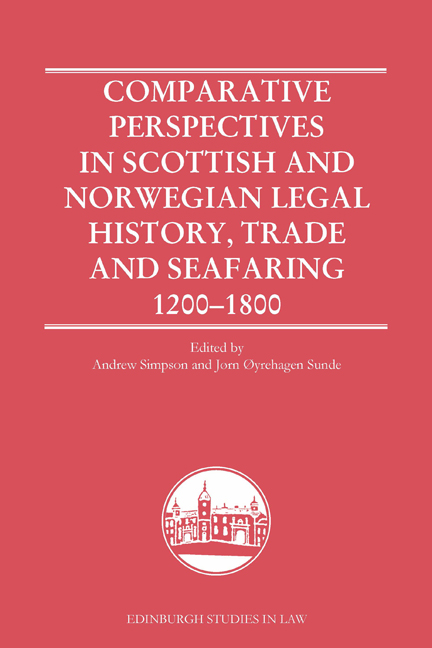6 - Urban Legal Procedure in Fourteenth Century Scotland: A fresh look at the 1317 court roll of Aberdeen
Published online by Cambridge University Press: 17 November 2023
Summary
A: INTRODUCTION
In 1317, a court of the burgh of Aberdeen had regard to what it called the leges burgorum Scocie – the laws of the burghs of Scotland – in determining the outcome of a particular legal process. The leges were used in part to identify the procedures that had to be followed when transferring claims to lands within the burgh from one person to another. Yet what did the court mean when it referred to the leges burgorum Scocie? In essence, that is the central question that will be considered throughout this chapter.
Those familiar with the history of the laws of the medieval Scottish kingdom might quite reasonably assume that when the court considered the leges burgorum Scocie, it was in fact referring to a text that survives in several manuscript witnesses dateable to the late-thirteenth and fourteenth centuries. The earliest manuscript witness bar one to the surviving text – the Ayr MS, dateable to 1323–1346 – refers to it as the “captiula legis burgorum Scocie” (i.e. the chapters of the law of the burghs of Scotland), whilst what may be the next earliest witness – the Bute MS, dateable to the final years of the fourteenth century – labels a Scots translation of it the “leges burgorum Scocie facte apud nouvm castrum super Tynam per Dauid regem Scotorum illustrisimum” (i.e. the laws of the burghs of Scotland made at Newcastle upon Tyne by David, most illustrious king of the Scots). This text may itself have owed something – or nothing, or a great deal, it is impossible to know for certain – to lost texts of burgh laws once contained in two rolls in the Scottish royal treasury in Edinburgh Castle in 1292. The rolls were labelled “de legibus assisis regni Scocie et de legibus et consuetudinibus Burgorum Scocie et de quibusdam statutis editis per reges Scocie” (i.e. concerning the laws and assizes of the kingdom of Scotland and concerning the laws and customs of the burghs of Scotland and concerning certain statutes brought forth by the kings of Scotland). Of course, anyone assuming that the court of the burgh of Aberdeen must have had the text attested in the Ayr MS and the Bute MS in mind when it referred to the leges burgorum Scocie might pause to reflect on the fact that the earliest witness to that text is labelled rather differently.
- Type
- Chapter
- Information
- Comparative Perspectives in Scottish and Norwegian Legal History, Trade and Seafaring, 1200-1800 , pp. 181 - 208Publisher: Edinburgh University PressPrint publication year: 2023

